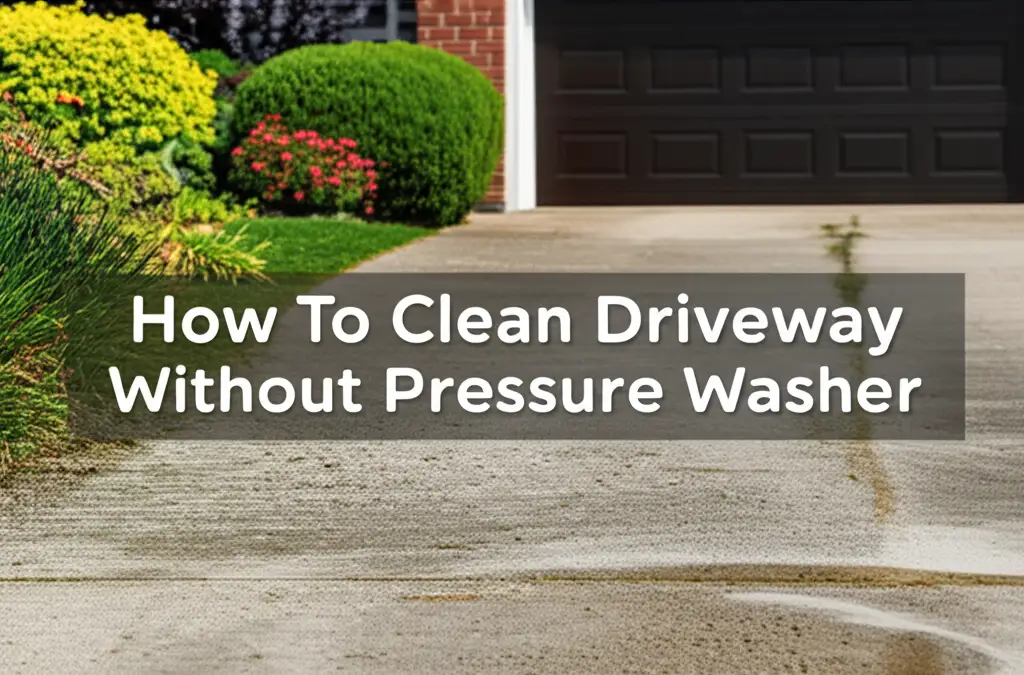· Outdoor Cleaning · 14 min read
How To Clean Palm Tree Trunk

Cleaning Your Palm Tree Trunk for a Healthier Look
Have you ever looked at your palm tree and wished its trunk looked as vibrant as its fronds? Palm trees bring a touch of the tropics to any landscape. Over time, their trunks can collect dirt, algae, mold, and even pests. This buildup makes them look dull.
Learning how to clean palm tree trunk is important. It not only improves the appearance of your tree but also contributes to its overall health. A clean trunk helps prevent diseases and pest infestations. This article will show you the best ways to clean your palm tree trunk. We will cover everything from assessing the mess to the right tools and techniques. Get ready to give your palm trees the care they deserve.
Takeaway
- Assess Trunk Condition: Identify dirt, mold, algae, or pests to choose the right cleaning method.
- Gather Tools: Collect soft brushes, a hose, mild soap, and protective gear.
- Clean Gently: Use water and a soft brush. Avoid harsh chemicals or high-pressure sprays.
- Address Specific Issues: Treat mold or pests with appropriate, non-toxic solutions.
- Prioritize Safety: Always use ladders carefully and wear protective equipment.
- Maintain Regularly: Prevent future buildup with routine checks and light cleaning.
To clean a palm tree trunk, gently scrub it with a soft-bristled brush and a solution of mild, eco-friendly soap and water. Rinse the trunk thoroughly with a low-pressure hose afterward. This process removes dirt, algae, and minor buildup without harming the tree’s bark.
Why You Should Clean Your Palm Tree Trunk
A clean palm tree trunk looks much better. It enhances your home’s curb appeal. But cleaning offers more than just beauty. It plays a big role in the tree’s health.
When debris, mold, or pests cover the trunk, they can block proper air circulation. This creates a damp environment. A damp trunk is a perfect place for fungi and harmful bacteria to grow. These can cause diseases that weaken the palm. You can help your tree breathe easier by removing this buildup.
Pests like scale insects or mealybugs often hide in trunk crevices. Cleaning helps expose these pests. You can then address them before they harm the tree. Regular cleaning is a form of early detection for problems. It is like giving your tree a health check-up. Healthy trees are strong trees. They can resist common issues better. Cleaning the trunk is a key part of good palm tree care. It keeps them looking their best and living longer.
Understanding Your Palm Trunk’s Condition
Before you start cleaning, you need to understand what is on your palm tree trunk. Different types of buildup require different approaches. Look closely at the trunk surface. Is it just dirt and dust? Or do you see green patches of algae? Perhaps there are black or dark spots indicating mold or mildew. Sometimes, you might even spot small insects or their residue.
Old, dead frond bases can cling to the trunk. These can trap moisture and debris. Removing these helps air circulation. If you see white, cottony masses or tiny bumps, these could be pests. Scale insects and mealybugs often look like this. Identifying the issue helps you pick the right cleaning method. A simple rinse works for dust. Mold or pests need a more specific treatment. Take a moment to inspect every part of the trunk that you can reach. This step helps you plan a safe and effective cleaning strategy.
Essential Tools and Materials for Palm Trunk Cleaning
Having the right tools makes cleaning your palm tree trunk easier and safer. You do not need many items. Start with basic cleaning supplies. A garden hose with a spray nozzle is essential. It provides water for rinsing and sometimes light washing. You will also need a soft-bristled brush. This could be a scrub brush or a long-handled car wash brush. Avoid stiff wire brushes. These can damage the tender bark of your palm tree.
For cleaning solutions, a mild, biodegradable soap is a good choice. Dish soap often works well. You can also use a mixture of water and white vinegar for mold or algae. Vinegar is a natural cleaner and fungicide. Prepare a bucket for mixing your cleaning solution. Always wear protective gloves to keep your hands safe. Safety glasses protect your eyes from splashes or debris. If your palm tree is tall, a sturdy ladder is necessary. Make sure someone can spot you while on the ladder. Having the right equipment ensures a smooth and effective cleaning process.
Step-by-Step Guide to Cleaning Your Palm Tree Trunk
Cleaning your palm tree trunk is a straightforward process. You must work gently to avoid harming the tree. Here is how I approach cleaning palm tree trunks.
Prepare the Area and Yourself
First, clear any obstacles around the base of the palm tree. This ensures you have enough room to move freely. If you are using a ladder, make sure the ground is stable. Put on your protective gloves and safety glasses. I always make sure I am comfortable and ready before I start.
Gentle Rinse
Begin by giving the trunk a good rinse with your garden hose. Use a low to medium pressure setting. This helps remove loose dirt, dust, and spiderwebs. It also wets the surface, preparing it for cleaning. Do not blast the trunk with high pressure. Strong water pressure can strip away the natural protective layers of the bark. It can also force water into unseen cracks, potentially causing issues.
Apply Cleaning Solution
Next, mix your cleaning solution. For general dirt, I use a few drops of mild dish soap in a bucket of water. If I see algae or mold, I opt for a solution of one part white vinegar to two parts water. This natural solution helps break down organic growth. Dip your soft-bristled brush into the solution.
Scrub the Trunk Gently
Start scrubbing the trunk from the bottom, working your way up. Use gentle, circular motions. The goal is to loosen the dirt and grime, not to scrape it off. Pay special attention to crevices and areas where debris collects. For more information on using vinegar for cleaning, you might find this guide helpful: How To Clean Walls With Vinegar. This helps ensure you get into all the nooks and crannies without being too aggressive. If the brush gets dirty, rinse it in your bucket of solution before continuing.
Final Rinse
After scrubbing the entire trunk, rinse it thoroughly with clean water from your hose. Make sure no soap or vinegar residue remains on the trunk. Residue can attract more dirt or even harm the tree over time. Keep rinsing until the water runs clear. This step is crucial for the health of your palm.
Inspect and Repeat if Necessary
Once the trunk dries, inspect your work. Is the trunk visibly cleaner? Are there any spots you missed? Sometimes, very stubborn areas might need a second round of cleaning. If you dealt with mold, ensure it is completely gone. For tips on dealing with mold on tough surfaces, you can check out How To Clean Mold Off Concrete. Remember, patience is key. A clean palm trunk enhances the beauty of your outdoor space.
Addressing Stubborn Issues: Mold, Fungus, and Pests
Sometimes, a simple scrub is not enough. Palm trunks can host more stubborn problems. These include mold, fungal growth, or even insect infestations. Dealing with these issues requires a more targeted approach.
If you spot black, green, or white patches that feel slimy or powdery, you likely have mold or fungus. For these, I often turn to natural solutions. A mixture of white vinegar and water is very effective. Mix one part white vinegar with two parts water in a spray bottle. Spray the affected areas generously. Let it sit for about 15-20 minutes. Then, gently scrub with a soft brush and rinse well. Vinegar helps to kill mold spores without harsh chemicals. For more detailed advice on tackling mold, including using vinegar, consider reading How To Clean Mold With Vinegar. This method is safe for your palm and the environment.
Pests like scale insects or mealybugs can cling to the trunk. They often appear as small bumps or cottony masses. For light infestations, you can often remove them manually. Use a soft brush or even a damp cloth. For more persistent pests, a horticultural oil or insecticidal soap can be effective. Follow the product instructions carefully. Always test a small, hidden area first. This ensures the product does not harm the palm. Avoid strong chemical pesticides. They can damage the tree or surrounding plants. Always choose products designed for use on trees. Removing these pests keeps your palm healthy and vibrant.
Safety First: Essential Precautions for Cleaning Your Palm Trunk
Cleaning a palm tree trunk, especially a tall one, requires attention to safety. Your well-being should always be the top priority. I always make sure I have the right safety gear before I start.
Wear sturdy, non-slip shoes. You will be working with water, and surfaces can become slippery. Protective gloves prevent skin irritation from cleaning solutions or rough bark. Safety glasses are a must. They shield your eyes from splashes, dust, or falling debris. These small precautions make a big difference.
If you need a ladder to reach higher parts of the trunk, choose a stable, A-frame ladder. Do not lean extension ladders against the palm trunk. The trunk surface can be uneven and cause the ladder to slip. Place the ladder on a firm, level surface. Have someone hold the ladder steady for you. This “spotter” adds an extra layer of safety. Always face the ladder when climbing up or down. Keep your body centered on the ladder. Do not overreach. It is better to move the ladder often than to stretch too far. Never stand on the top rung of any ladder. If the palm is extremely tall, consider hiring a professional. They have specialized equipment and training for safe, high-level tree work. Prioritizing safety ensures your palm gets clean without any accidents.
Maintaining a Clean Palm Trunk: Prevention Tips
Keeping your palm tree trunk clean is an ongoing process. Regular maintenance prevents heavy buildup. This makes future cleaning jobs much easier. I always advise a routine approach for lasting results.
First, regular inspections are key. Take a few minutes every month to look at your palm tree trunk. Check for early signs of dirt, algae, or pest activity. Catching issues early means you can deal with them quickly. A quick wipe-down with a damp cloth can prevent small problems from becoming big ones.
Proper watering and drainage around the base of the palm are also important. Excessive moisture can encourage mold and fungal growth on the trunk. Ensure water drains away from the trunk base. Avoid overwatering the area directly around the trunk. Trimming dead fronds promptly is another good practice. Dead fronds can trap moisture and debris against the trunk. This creates a perfect environment for unwanted growth and pests. Prune them carefully using clean, sharp tools. This helps air circulate better around the trunk.
Finally, consider the overall health of your palm tree. A healthy, vigorous palm is more resistant to pests and diseases. Provide proper nutrients through fertilization if needed. Ensure it receives adequate sunlight. By taking these preventative steps, you will keep your palm tree trunk clean and healthy for years to come. This reduces the need for intense cleaning sessions.
Common Palm Trunk Issues and Solutions
Palm tree trunks can face several common issues beyond just dirt. Knowing how to identify and solve these problems helps keep your trees healthy.
One common issue is the presence of sap or sticky residue. This often indicates the presence of sap-sucking insects like aphids or scale. These pests excrete a sugary substance called honeydew. Honeydew then attracts sooty mold. To fix this, first address the pest problem. You can use insecticidal soap or horticultural oil. Then, you can clean the sticky residue and mold from the trunk using mild soap and water. For other stain removal tips, see How To Clean Stains From Concrete.
Another issue is bark discoloration or flaking. Sometimes, this is natural aging for certain palm species. Other times, it can be a sign of fungal infection or poor health. If you see deep cracks, oozing, or unusual growth, consult an arborist. They can diagnose the problem accurately. Do not try to peel off flaking bark unless it is clearly dead and loose. You might damage the living tissue underneath.
Fungus can also appear as mushroom-like growths on the trunk. These are often a sign of internal decay. Removing the visible fungus will not cure the underlying problem. Again, an arborist should assess this. They can provide professional advice on tree health. Regular inspection helps you notice these changes early. Early detection means better chances for treatment. Keeping your palm tree trunk clean helps you monitor its health closely.
When to Call a Professional
While most palm tree trunk cleaning can be a DIY task, there are times when it is best to call in experts. Knowing your limits protects both you and your tree.
If your palm tree is very tall, reaching the trunk safely can be impossible. Professionals have tall ladders, lifts, and climbing gear. They are trained to work at heights. Attempting to clean a very tall palm without proper equipment is dangerous. Safety always comes first.
Also, if you notice signs of serious disease or widespread pest infestation, a professional arborist is your best bet. They can accurately diagnose complex issues. They have specialized knowledge and tools to treat diseases or severe pest problems. Attempting to treat severe issues yourself without proper knowledge can harm the tree further. If you see large fungal growths, deep cracks, or significant bark decay, these are warning signs. An arborist can assess the tree’s health and recommend proper treatment. They can also advise on structural integrity.
Lastly, if you are unsure about any part of the cleaning process or the tree’s health, do not hesitate to ask for help. A small investment in professional advice can save you bigger problems down the road. They can clean your palm tree trunk effectively and safely, ensuring its long-term health and beauty.
Frequently Asked Questions
Q: How often should I clean my palm tree trunk? A: The frequency depends on your local environment and the tree’s exposure. For most palms, cleaning once or twice a year is sufficient. In dusty or humid areas, more frequent light cleaning may be beneficial. Regular visual checks help you decide when cleaning is needed.
Q: Can I use a pressure washer on my palm tree trunk? A: Use a pressure washer with extreme caution, if at all. High pressure can strip the bark, remove protective layers, and damage the sensitive living tissue beneath. If you must use one, set it to a very low pressure. Keep the nozzle far from the trunk. A soft brush and garden hose are much safer.
Q: What kind of soap is safe for cleaning palm tree trunks? A: Use a mild, biodegradable soap. Dish soap that is free of harsh chemicals or strong perfumes is a good choice. Avoid strong detergents or abrasive cleaners. Always dilute the soap well with water. Rinse the trunk completely afterward to remove all soap residue.
Q: Will cleaning my palm trunk prevent pests? A: Cleaning the trunk helps prevent pests by removing hiding spots and food sources like honeydew or algae. It also allows you to spot pests early. However, it does not guarantee complete pest prevention. Combine cleaning with other good cultural practices for best results.
Q: Is it necessary to remove all the old frond bases from the trunk? A: Not all palm species shed frond bases naturally. For those that do, removing dead, loose frond bases can improve appearance and reduce habitats for pests. Be gentle. Only remove fronds that detach easily. For palms that retain their fronds, leave them be.
Q: Can cleaning damage the palm tree? A: Yes, if done improperly. Using harsh chemicals, stiff brushes, or high-pressure water can damage the bark. This makes the tree vulnerable to disease and pests. Always use gentle methods, appropriate tools, and mild solutions to ensure the tree’s safety.
Conclusion
Cleaning your palm tree trunk is a rewarding task. It significantly boosts your palm’s appearance. It also plays a vital role in its long-term health. We have covered why cleaning matters. We discussed how to assess your trunk’s condition and the right tools to use. We walked through a simple, step-by-step cleaning process. Remember to address stubborn issues like mold or pests with care. Always prioritize your safety when working around trees.
By following these guidelines, you ensure your palm tree thrives. Regular maintenance and gentle care keep your palm looking its best. A clean palm tree trunk is a sign of a healthy, well-cared-for tree. Take the time to show your palms some love. They will reward you with beauty for many years to come. Your outdoor space will thank you for it.
- palm tree care
- trunk cleaning
- outdoor maintenance
- tree health




